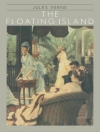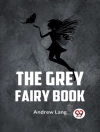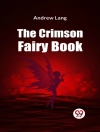The Complete Works: Charlotte, Emily, Anne, Patrick & Branwell Brontë is a monumental collection that captures the unparalleled voices of the Brontë family across a vast spectrum of genres and themes. This anthology offers readers a deep dive into the emotional and intellectual landscapes crafted by the Brontës, known for their innovative approach to gothic and romantic literature. Each piece, whether a novel, poem, or letter, is punctuated with profound psychological and social insights, painting a vivid portrait of 19th-century life and its stark tensions. Among the diverse offerings, the collection subtly showcases standout works that have reshaped literary conventions, underlining the innovative spirit that resonates through the Brontë oeuvre. United by their familial and creative bonds, the Brontë siblings crafted narratives that were deeply interwoven with the evolving cultural and social milieu of their time. Emerging from the moorlands of Yorkshire, their works eschew societal norms, drawing upon the Romantic and Gothic traditions to address complex themes such as identity, autonomy, and unrequited love. This collection captures the essence of a literary movement marked by introspection and defiance, with each sibling contributing distinct perspectives that reflect both their individual experiences and collective ethos. Ideal for readers eager to explore a tapestry of literary brilliance, this anthology provides a rare glimpse into the multifaceted genius of the Brontë family. Its comprehensive scope invites a nuanced understanding of the varied styles and themes that have enchanted generations. Through these works, readers are offered an invaluable opportunity to engage with timeless narratives that challenge, enlighten, and inspire. The Complete Works stands as a testament to the enduring impact and relevance of the Brontës’ literary contributions.
Giới thiệu về tác giả
Charlotte Brontë (1816–1855) remains one of the most influential British authors of the 19th century, renowned for her contributions to the English literature canon. Brontë’s work is distinguished by its groundbreaking exploration of the female psyche and complex narrative styles. Born in Thornton, Yorkshire, she was the third of six children to Patrick Brontë and Maria Branwell. Charlotte, along with her sisters Emily and Anne, initially published poetry and novels under masculine pseudonyms to circumvent the gender biases of the period. Her most acclaimed novel, ‘Jane Eyre’ (1847), published under the name Currer Bell, is hailed for its incisive exploration of morality, social class, and gender relations through the lens of the eponymous protagonist. Equally important is the lesser-known ‘Shirley’ (1849), which addresses industrial unrest and the role of women in society, and ‘Villette’ (1853), a narrative that delves into isolation and the search for identity, which has garnered critical acclaim for its psychological depth and use of narrative voice. Her works collectively are published in ‘The Complete Works: Charlotte, Emily, Anne, Patrick & Branwell Brontë, ‘ which underscores the literary legacy of the Brontë family. Charlotte Brontë’s literary style, characterized by its emotional realism, social criticism, and complex character development, continues to captivate scholars and readers alike, securing her place in the pantheon of great English writers.












